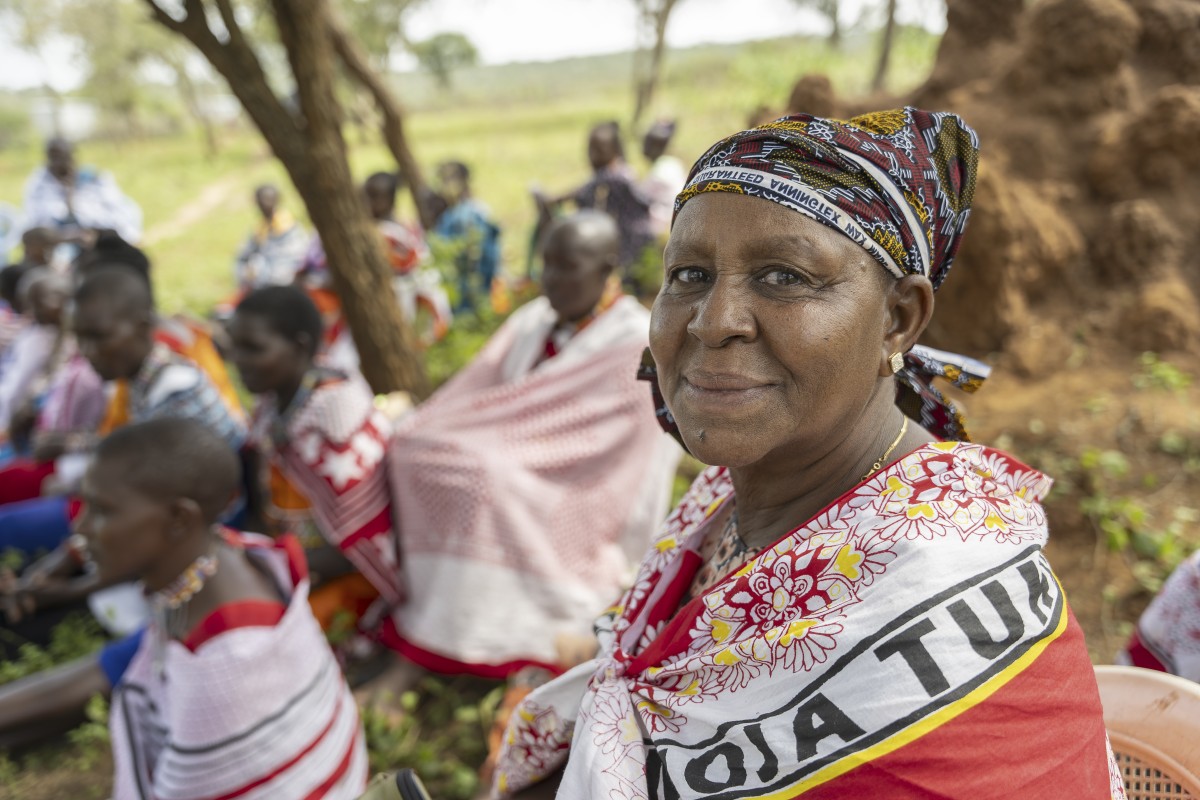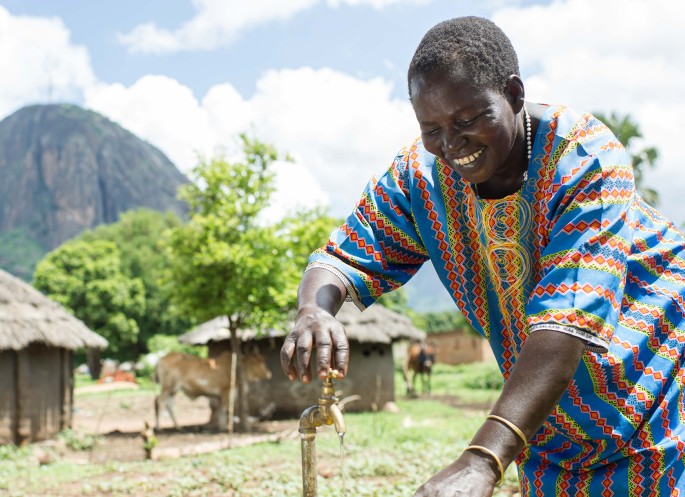COP30 in Belém, Brazil: What is it and what will happen?
COP30 will take place in Belém, Brazil from 10 to 21 November 2025. This annual United Nations climate summit, officially known as the Conference of the Parties (COP), is a crucial moment when world leaders, policymakers, civil society organisations, knowledge institutions and companies come together to negotiate measures to combat the climate crisis. What can we expect from COP30?
What is COP30?
COP30 stands for the 30th Conference of the Parties to the United Nations Framework Convention on Climate Change (UNFCCC). During this climate summit, governments must take new steps to limit the climate crisis and achieve the target of a maximum of 1.5 degrees of global warming. The conference is essential for making global agreements and setting a climate finance goal. At the COP, decisions are reached by consensus and apply to all countries that are members of the UN.
The formal negotiations take place in the COP blue zone. This is where the most important decisions and negotiations on climate change are discussed. It is only accessible to delegates from member states, observers, UN organisations and accredited civil society organisations, which includes Simavi. In the COP green zone, organisations come together to share initiatives on sustainability and to network.
What does UNFCCC mean?
The UNFCCC (United Nations Framework Convention on Climate Change) is an international treaty that was concluded in 1992 during the Earth Summit in Rio de Janeiro, Brazil. The aim of the UNFCCC is to combat global warming by reducing global greenhouse gas emissions. In addition, the treaty is intended to find solutions and financing for countries that suffer from the consequences of climate change. The treaty forms the basis for international climate conferences, such as the annual COP.
COP is the abbreviation of Conference of the Parties, meaning the parties that have signed the UNFCCC treaty. Since 1995, countries have met annually to make agreements on climate policy. The 2015 Paris Agreement, which set a target of limiting global warming to 1.5 degrees Celsius, is an important outcome of previous COPs. The Paris Agreement consists of three pillars: mitigation (= reducing emissions), adaptation (= adapting to the consequences of climate change) and financing (= support from rich countries for poorer countries).
Where will COP30 take place?
The COP presidency rotates between the five recognized UN regions: Africa, Asia, Latin America and the Caribbean, Central and Eastern Europe and Western Europe plus countries such as Canada, the US, New Zealand and Australia. In 2025, COP30 will be held in Belém, a city on the Amazon River in Brazil. Belém grew large and prosperous in the late 19th century due to an economic boom in the rubber industry. The current president of Brazil, Lula Da Silva, said about the choice of this city for the climate summit: ‘If everyone is talking about the Amazon, why not hold the climate summit in an Amazonian state?’ Belém is also an important centre for the ‘indigenous rights movement’ and there are large, protected nature reserves near the city.
Because it is expected that more than 50,000 people, including many world leaders, will be present in Belém, a new highway is being built. A 13-kilometre stretch of protected Amazon rainforest has been cut down for this purpose. This decision has been criticised by conservationists.

What topics are discussed during a COP?
During each COP, topics such as mitigation, just transition, adaptation, financing and gender are discussed. Read below what is meant by these terms.
- Mitigation means reducing the emission of greenhouse gases that cause climate change. Most greenhouse gases – the most well-known being CO2 – are released into the atmosphere by burning fossil fuels such as coal, oil and gas.
- In the Just Transition work programme, countries talk about transitioning to an economy that uses few fossil fuels in a way that does not affect the population.
- Adaptation is the process of adjusting to the consequences of climate change.
- Climate finance is the money, in the form of investments, subsidies and loans, that is needed for all these processes. Rich countries have promised to release climate finance annually for poorer countries – who do not have the resources to do so and have also contributed much less to climate change. Unfortunately, the actual transfer of funds lags far behind the promises made.
- Gender is also an important part of climate action. Women worldwide are hit hardest by the consequences of climate change and have fewer resources to protect or adapt themselves.
What is on the agenda for COP30?
A number of important decisions have to be taken during COP30. The top priority is the national contributions to the reduction of greenhouse gas emissions, the Nationally Determined Contributions (NDCs). In 2025, all countries must submit these targets for 2035. All participating countries must have incorporated the new energy agreements made during COP28.
The EU will submit a single joint NDC for this. This is expected in October of this year. This means that the economic changes needed to reduce emissions will have to be discussed.
The same applies to the National Adaptation Plans, which all countries must also have ready by 2025. These mainly concern the adjustments and investments needed to absorb the consequences of climate change.
The starting point is still to keep global warming within 1.5 degrees Celsius, the goal that was agreed upon in Paris. During previous COPs, oil-producing countries led by Saudi Arabia have put up a blockade against further agreements on emission reduction. Host country Brazil seems ambitious on this subject; they want to emphasize the role of forests and ecosystems in absorbing greenhouse gases.
During COP28, a Global Goal on Adaptation was agreed upon, but this still needs to be further elaborated. This year, work is being done on filling in the indicators to measure adaptation. These must be established at COP30. For Simavi, it is important that there are two indicators on water: one on water and sanitation and one on ecosystems and water.
What has happened so far in Belém?
Negotiations in the Blue Zone are still well underway. In the first week of negotiations, the participating countries failed to reach any significant agreements.
Most of the action took place outside the COP grounds. During this "Amazon COP," demonstrations are permitted for the first time in years, and indigenous activists are particularly taking advantage of this opportunity. They chant "Free the Amazon" to draw attention to how climate change is now seriously threatening their habitat. While discussions are taking place inside about how long countries should be allowed to phase out fossil fuels and the amounts needed for climate mitigation and adaptation, they once again feel unheard. This is remarkable, given that the host country, Brazil, declared beforehand that this would be the "COP for Indigenous Peoples."
Controversy also arose after the coalition Kick Big Polluters Out published figures on the number of attendees representing the fossil fuel industry. The number of fossil fuel lobbyists is said to have increased by 12% compared to last year, to around 1,600.
Who will negotiate on behalf of the Netherlands during COP30?
The climate policy of the Netherlands is largely determined by the European Union. During the COP, the European Union (EU) negotiates as one party, based on the joint position that is established in the Environment Council. The Environment Council is the European council of all environment ministers. For the Netherlands, this is VVD Minister of Climate and Green Growth Sophie Hermans. On behalf of the European Commission, this is Climate Commissioner Wopke Hoekstra.
Why do NGOs like Simavi go to COP30?
NGOs, including development organisation Simavi, play an important role by drawing attention to marginalised groups during COP30, such as women and girls and communities in the Global South. Historically, these groups and communities contribute the least to climate change but are hit hardest by its consequences. Simavi also draws attention to water and sanitation in climate adaptation.
Simavi will also go to the biannual meeting in Bonn in June this year, where the COP is prepared at the official level. There, the opportunities to draw attention to the points that Simavi wants to achieve are sometimes greater than at the COP itself. Dutch NGOs work together for this in the International Climate Coalition. This consists of organisations such as Simavi, CARE Nederland, Mercy Corps, Action Aid, and Oxfam Novib.
What does Simavi want to achieve during the COP?
Simavi advocates for water justice. This means that everyone has access to sufficient clean water for drinking, household and livelihood. This access to water is under pressure due to the consequences of climate change: extreme drought, salinization of groundwater, melting of glaciers, extreme rainfall and flooding. This leads to too little, too much or too dirty water.
Women and girls in particular – who are responsible for fetching water in many countries – are the victims of the consequences of a lack of access to water. These women and girls are working hard on solutions for this. That is why Simavi is committed to good financial arrangements for climate adaptation with attention for water and sanitation. The focus is on subsidies rather than loans, so that countries do not have to take on further debts.
What was the outcome of COP29?
COP29 was held in Baku, the capital of Azerbaijan. It was a remarkable location for a climate summit, given that Azerbaijan’s economy runs almost exclusively on oil and gas. The results achieved in Baku were very disappointing. The main goal of COP29 was to set a new climate finance target, designed to support developing countries in the transition to sustainable energy and in adapting to the impacts of climate change.
The parties agreed to provide $300 billion per year in climate finance until 2035. This is nowhere near what scientists had calculated as a fair financing target. Moreover, much of this comes in the form of loans, while many developing countries are already drowning in debt. However, Baku did call for work to work on a minimum of $1,300 billion per year in climate finance from 2035, which is needed to support developing countries in the transition to sustainable energy and in climate adaptation.
What are the expectations for COP30?
Brazil has a greener reputation than the 2024 host country and is determined to make this a historic climate summit. COP30 President-elect André Corrêa do Lago has already called for a global Mutirão (joint effort): actions and mobilization around the world to tackle climate change. Brazil also wants to give extra attention to forests and indigenous peoples.
A source of tension remains that rich countries, which have historically made the largest contribution to climate change, are asking for more far-reaching measures from other countries, but are not prepared to provide international climate finance for this, or transfer technology to do so.
Do you want to stay up to date about the news on COP30? Sign up for our newsletter.


